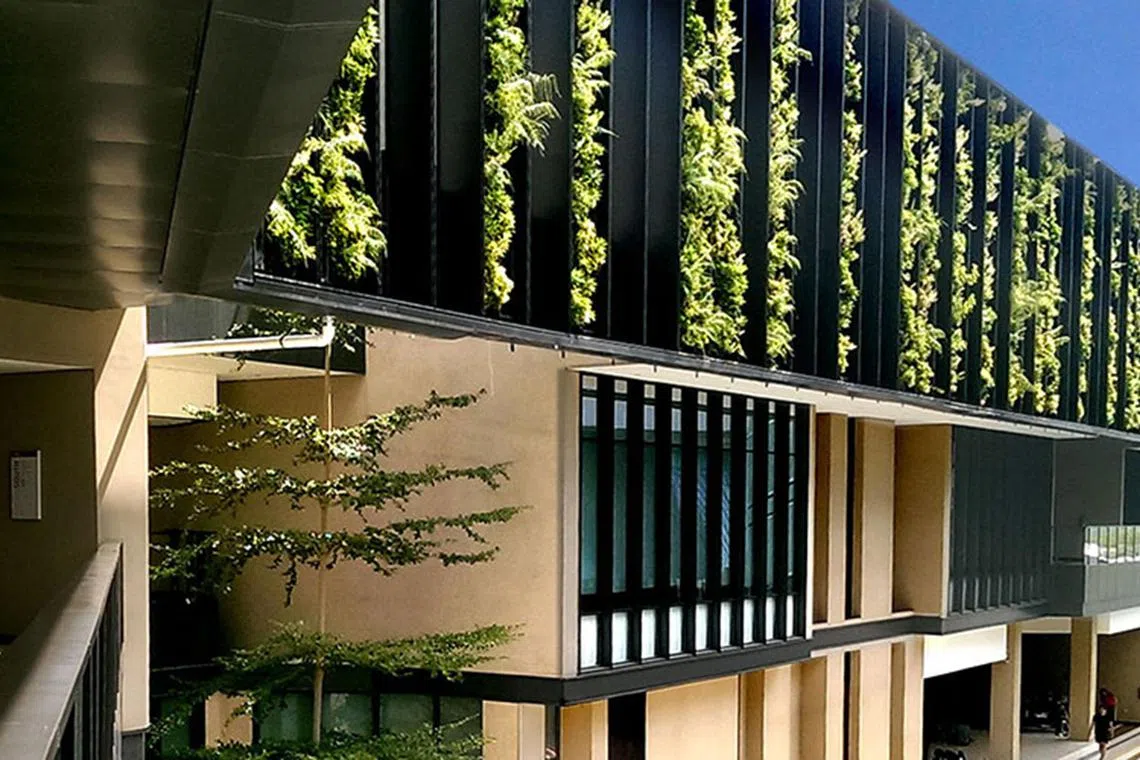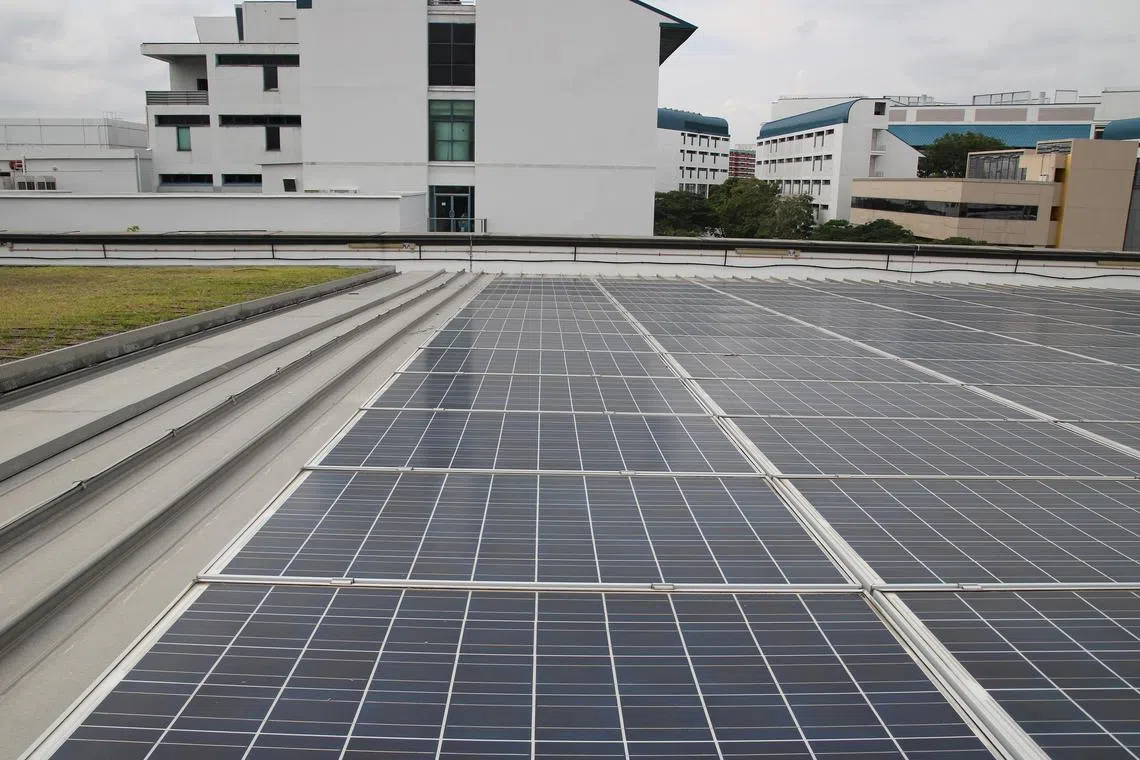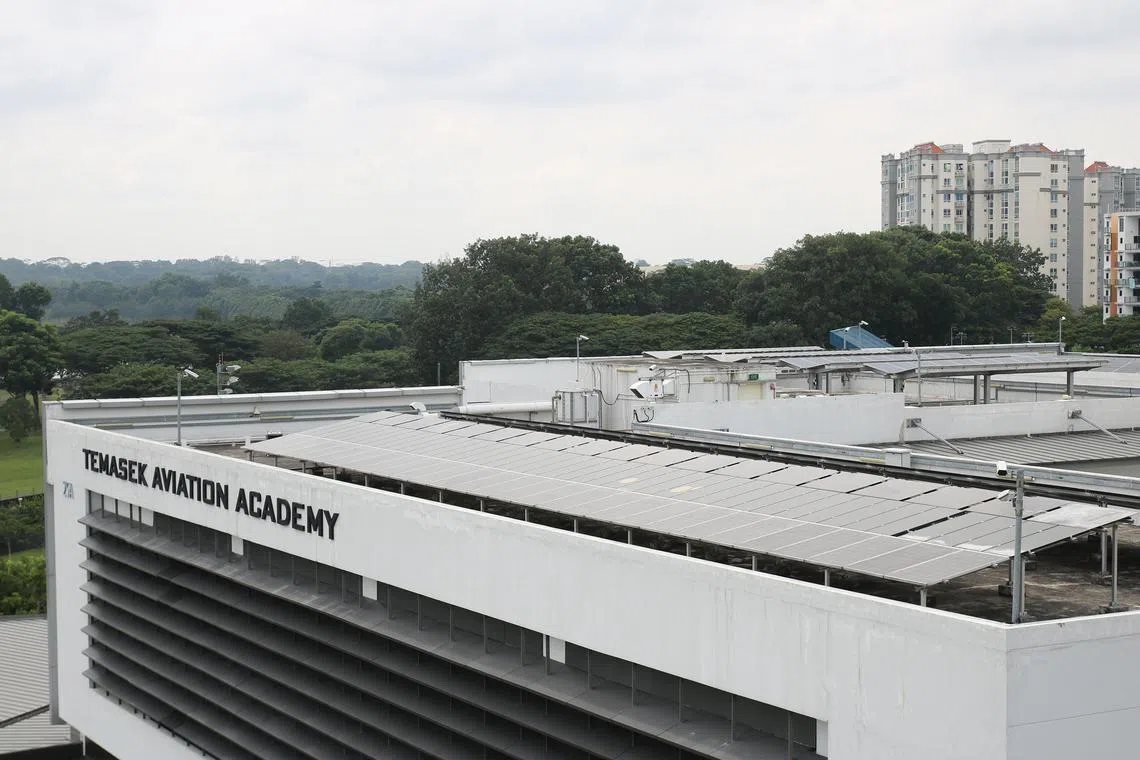Temasek Poly sets 2050 net-zero target for sustainability road map
Sign up now: Get ST's newsletters delivered to your inbox

Temasek Polytechnic is one of the first few institutes of higher learning to develop plans for net-zero emissions.
PHOTO: TEMASEK POLYTECHNIC
Follow topic:
SINGAPORE - Temasek Polytechnic (TP) plans to develop a road map to net zero closely aligned to internationally recognised standards, as schools here gear up towards achieving Singa p ore’s 2030 target to achieve carbon neutrality
TP’s chief sustainability officer Wallace Lim said the school is looking to determine “ambitious yet achievable” sustainability targets for 2030 and beyond, and get to net zero by 2050 – in tandem with Singapore’s national targets.
It will hire a consultant to measure the school’s current energy and water consumption, waste generation, and direct and indirect greenhouse gas emissions – and to set targets to reduce them.
TP’s staff and students would also have to be involved in the project, from measuring the school’s carbon footprint to developing the 2030 environmental road map, according to tender documents on government portal Gebiz.
The polytechnic is among the first few institutes of higher learning to be developing net-zero plans
Under the Singapore Green Plan
Net zero refers to bringing a company or organisation’s greenhouse gas emissions to as close to zero as possible, achieved when man-made emissions are balanced by removals over a specified period. Being carbon-neutral means the organisation has no net release of carbon dioxide.
TP’s targets would be benchmarked against similar organisations, such as local or international institutes of higher learning, and done in reference to recognised international frameworks like the Science Based Targets initiative (SBTi).
SBTi is the only global framework that validates a company’s net-zero plans, to ensure that they are aligned with climate science and can help the world limit global warming to 1.5 deg C above pre-industrial levels – a target countries have agreed to achieving to avert the more catastrophic impacts of climate change.
Mr Matthias Ong, head of corporate engagement in South-east Asia and Oceania at the international non-profit CDP, said reducing emissions in schools is a key initiative of Singapore’s Green Plan 2030, so it is commendable when they go one step further to net zero using the SBTi framework.
“The good thing about schools is that what they do is very replicable, so it can pave the way for a blueprint for the rest of the schools to follow,” added Mr Ong, whose organisation helps companies and cities disclose their environmental impact.
Mr Lim said sustainability accounting has become a big area of demand, and the school is looking to develop the capability in its students and staff to “better support industry needs”, such as by helping companies, particularly small and medium-sized enterprises, to develop and achieve their own sustainability plans.

Walls and rooftops on the Temasek Polytechnic campus lined with greenery and plants.
PHOTO: TEMASEK POLYTECHNIC
Faculty members who currently develop the school’s curriculum on various aspects of sustainability and who provide training and consultancy services for companies will be selected to play a part in the road map, while students who are in relevant courses such as business or science will be roped in as well.
From 2018 to 2022, TP has reduced its energy consumption by more than 28 per cent, water consumption by more than 18 per cent, and waste generation by 50 per cent, Mr Lim said.
In 2022, the school consumed around 33,936 megawatt hours (MWh) of electricity, down from about 36,728 MWh in 2021.

Solar panels on the rooftops of the Temasek Polytechnic campus.
PHOTO: TEMASEK POLYTECHNIC

Solar panels on the rooftops of the Temasek Polytechnic campus.
PHOTO: TEMASEK POLYTECHNIC
Compared with 2021, when pandemic disruptions were still rife, TP’s total water consumption increased in 2022 from 219.6 million litres to 223.9 million litres, while total generated waste increased from 475.6 tonnes to 478.6 tonnes.
TP aims to do even better to reduce utilities consumption and waste generation, particularly, said Mr Lim, adding that this exercise will shed more light on where and how the polytechnic can do better.
Among other institutions contacted by ST, Ngee Ann Polytechnic has a 2045 target for net-zero emissions, which it said is contingent on the “progress of technologies and international cooperation” to enable greenhouse gas mitigation measures.
The Institute of Technical Education said it is working to have its three campuses certified as “Super Low Energy” in the next few years before transitioning to net zero.
The other polytechnics have sustainability measures in place but either do not have a net-zero plan yet or did not respond to queries relating to net zero.
The National University of Singapore and Singapore Management University have plans to reach carbon neutrality by 2030, while the Nanyang Technological University said it is striving to achieve this by 2035 based on targets being guided by SBTi.


